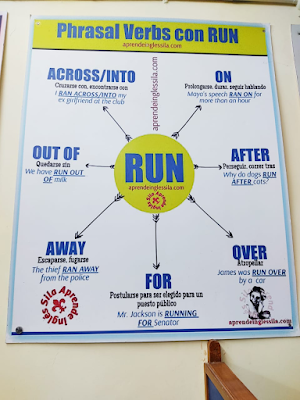Wide Sargasso Sea, a prequel to Bronte’s Jane Eyre, is Jean Rhys’ attempt to give voice to the voiceless “mad woman” of Jane Eyre. Rhys’ rewriting of Jane Eyre highlights the orientalist perception of Bronte of the West Indies. Jean Rhys once said that throught her childhood she had been fascinated with the mad woman of Jane Eyre and she always wanted to give her a narrative, which she accomplished in her last novel (qtd in. Bsudlr).
The novel begins in 1834 in Coulibri, the slaves have been granted emancipation. In this novel Rhys chose the timeline to be a year after the emancipation act which makes it easy to highlight the racial tensions and the hatred the former slaves held for the white colonizers. In this novel we are provided with the childhood details of Antoinette/Bertha’s life so that we could to terms with her madness at the end which has already been written by Bronte. In Jane Eyer she is portrayed as just a mad woman living in the attic but in Rhys’ novel she is a daughter, wife, and lover hence a human who deserves happiness but who has ruthlessly been deprived off. When the world around her tries to isolate her or to impose an identity on her she unconsciously creates a bubble around her in which she lives happily so liminality or her liminal existence is her escapist strategy.
The term “liminality” gained popularity in the twentieth century through the works of Victor Turner who expanded Van Gennep’s idea concept in his work. Turner in his “Liminality and Communitas” describes liminality as “passage”, “movement” and “shift in and out of time”. He defined liminal individuals as “neither here and there; they are betwixt and between positions assigned and arrayed by laws, customs ,conventions and ceremony”. Liminality is linked with “, invisibility, darkness, wilderness and to an eclipse of the sun and moon” all these things are evident in Bertha’s character in Jane Eyre she looms as an invisible ghost throughout the novel. At time when she is not physically present in the novel her presence can be felt by the reader, outside, as well as the characters, inside the novel. In addition to this the connection of wilderness and the eclipse of the moon is easily visible in the book. She has been escribe by Bronte as a dark colored creole.
Liminal entities are described by Turner as “may be disguised as monsters, wear only strip of clothing or even go naked to demonstrate that as liminal being they have no status , property, secular clothing , insignia…”. This description of a liminal entity is easily visible in Antoinette’s character in Wide Sargasso Sea, for Rochester she behaves as a monster when she learns that Rochester slept with the Amelia when he tries to stop her she bites his wrist and throws several bottles of rum on the wall. In addition to this the incident when Tia took all her clothes away she stripped her not only of her clothes but her status, property all the illusions, about herself she had in her mind.
Turner describes the phases of a liminal experience: “ the first phase requires the child to go through a separation from his family; this involves his/her death as a child, as childhood is effectively left behind. In the second stage ,initiate, between childhood and adulthood, the child requires to pass a test to prove that he is ready for adulthood. If he succeeds , the third stage involves a celebration of new birth of the adulthood and the welcoming of the being back into the society” (qtd in. Chakraborty). If we analyse Antoinette under the light of the aforementioned theory one can make a conclusion that she got herself stuck in her own bubble of liminality as she never succeeded to the third phase of liminality but she surely experience the first two. She was never a child in her entire childhood but the specks of childhood left in her were officially robbed off her when the natives set fire to her house, killing her brother and driving her mother into insanity. The second stage is reflected, in the second part of the novel, in the form of her marriage which shows that she has ascended from childhood to adulthood, the predicament of her marriage is another entire story but the very act of marriage is reflective of the second phase of liminality.
In “ Liminality and Communitas”, Turner has explained certain attributes of the liminal entities. I will be examining the characters, especially Antoinette, in the novel under the light of those attributes. In liminality the invisible becomes visible or the underdog becomes important in other words the roles of master and slaves are reverted inside the liminal world. “The supreme political authority is portrayed as a slave” (364). In the novel the formerly subjugated slaves get their freedom and it is shown in almost the entire that they are the ones pulling the strings of their so called former masters. If we critically analyse the entire episode of Denial Cosway and, the nameless, Rochester it seems as if he is pulling the strings of Rochester and Rochester is dancing to his tunes, but this is the case of a freed slave if we analyse the relation of Christophine and Annette it is Christophine who is more authoritative here mot the master but the slave. At one point Annette accepts her authority when she says, “ I dare say we would have died if she’d turned against us” . In one scene Christophine literary shouts at Annette. Then there is Antoinette and Amelia. Amelia though being a servant irritates Antoinette by saying that Rochester is getting “tired of their sweet honeymoon” . She even dares to sleep with her master’s husband to irritate her.
The next attribute is “Silence and Submissiveness”. This attribute is highlighted in the novel when at first Antoinette enters the convent as a part of an ideal woman’s upbringing these attributes are infused into her personality. Secondly it is highlighted in the novel is at the time to Antoinette’s marriage, to a man whom she accepted with silence and submission but when she tried to rebel and refuse the marriage she is again humbled and silenced by Rochester through his techniques of an ideal man who will bring “peace” to her life. She marries him and then the actual silence and submissiveness begins. When Christophine tries to talk her out her marriage she says that “ I am not rich now, I have no money of my own at all, everything I had belongs to him” . She could have rebelled but it appears as if she has internalized this silenced and submissive existence of hers. She even tries to save her marriage through magic as if love can be poured into one’s heart. It just shows the extent to which she is incapable of standing for herself. Even after Rochester sleeps with Amelia and begin to hate Antoinette she ends up in his house in England submissive and silenced.
Madwoman in the Attic
Madwoman in the Attic (1979), Sandra Gilbert and Susan Gubar's critical study of British and American nineteenth-century women's literature, attempts to define a "distinctively female literary tradition." The authors also try to unearth significant women's literature and rescue previously disregarded women's history. Gilbert and Gubar's analysis of authors such as Jane Austen, Emily and Charlotte Brontë, George Eliot, Mary Shelley, and Emily Dickinson signals a shift in literary studies from examining how male authors write female characters toward a definition of female authorship, or how women authors construct female characters. Gilbert and Gubar take into account the cultural and political climate in which those authors wrote as well as the texts that those authors read. With those issues in mind, Gilbert and Gubar explore "images of enclosure and escape, fantasies in which maddened doubles function as asocial surrogates for docile selves, [and] obsessive depictions of diseases like anorexia, agoraphobia, and claustrophobia" (Gilbert and Gubar 1979, p. XI). In some ways, Gilbert and Gubar contend, the trapped position of female authors within patriarchal literary constructs manifests itself in the literal and metaphorical enclosures about which many of them wrote.
The title of the book refers to the character Bertha Rochester in Charlotte Brontë's Jane Eyre (1847), who not only suffers from madness but also serves as a double for the character of Jane. Gilbert and Gubar contend that Jane's central confrontation of the text is not with Mr. Rochester but with Bertha and her manifestation of Jane's emotions. In Jane's coming-of-age journey, she must face oppression, starvation, madness, and coldness at each of the estates in which she lives and works. At Thornfield, Jane meets her "dark double" Bertha, who acts out Jane's feelings of "rebellion and rage." Bertha is the only true "madwoman in the attic" in Gilbert and Gubar's critical study.
Moreover, the authors explore the figure of the madwoman as a double in writings by Mary Elizabeth Coleridge and
George Eliot , for example, to demonstrate how nineteenth-century women writers and poets employed mirrors to create the madwoman. These madwomen emerge "over and over again from the mirrors women writers hold up both to their own natures and to their own visions of nature," and they appear "from a silence in which neither [they] nor [their] author[s] can continue to acquiesce" . The figure of the mirrored madwoman signifies a strategy authors and poets such as Mary Shelley and Emily Dickinson utilized to represent themselves as split or, more specifically, deploying a "female schizophrenia of authorship." This approach also prefigures authors such as Virginia Woolf, Doris Lessing, and Sylvia Plath, who divide and project themselves onto particular characters.
This groundbreaking book on women's literature drew on work by historians such as Gerda Lerner, Alice Rossi, Ann Douglas, and Martha Vicinus as well as literary-cultural studies conducted by Ellen Moers (Literary Women) and Elaine Showalter (A Literature of Their Own). Gilbert and Gubar's study elicited a range of responses from feminist, literary, and historical critics, who have worked to expand the field of women's literary studies.
Thank you !











.jpg)
.jpg)



.jpg)










